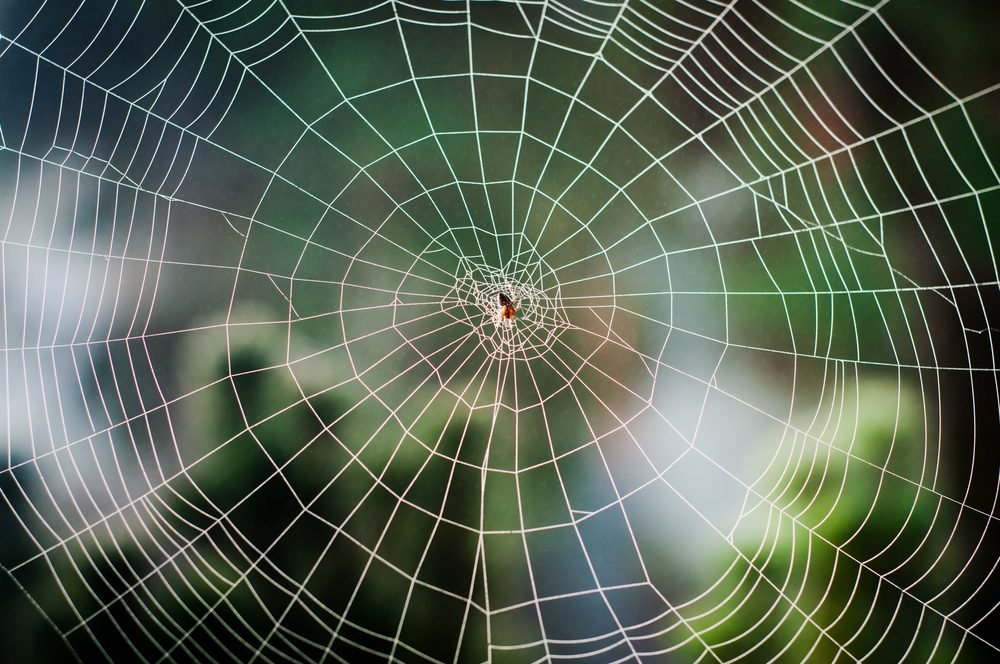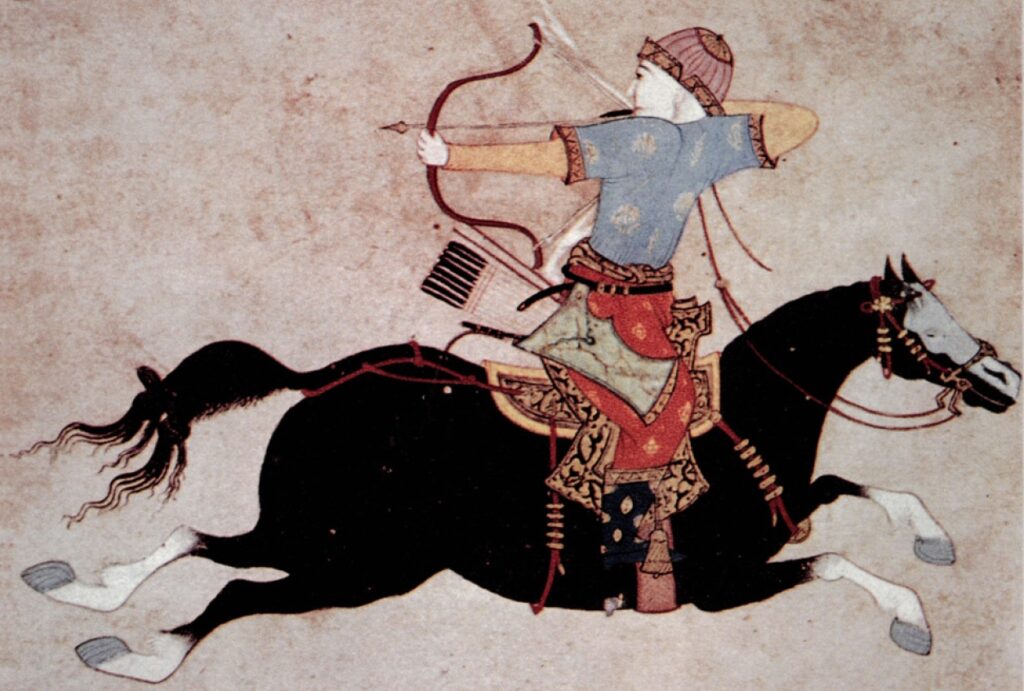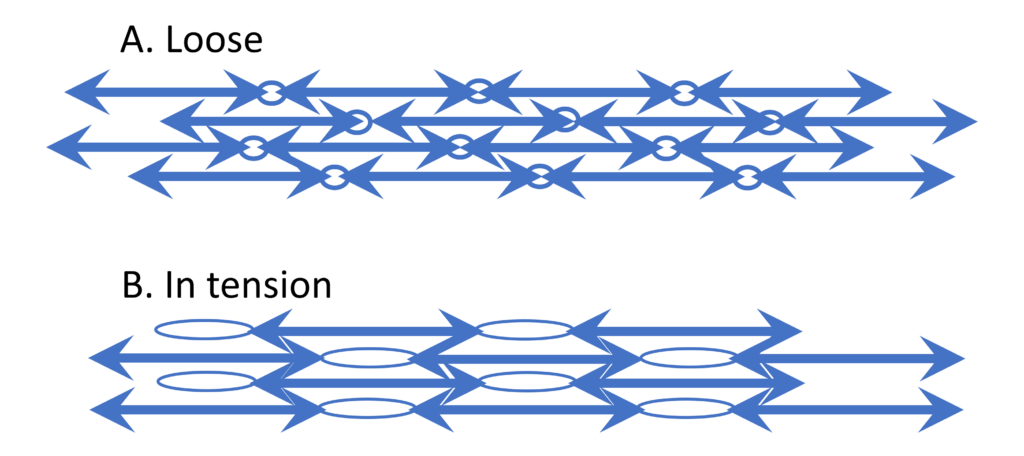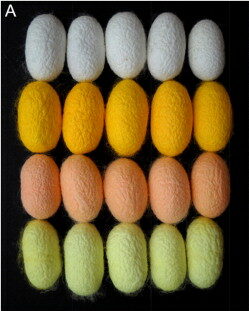Autumn is a great time to see spiders, although we rarely want to encounter their webs by surprise. Sticky and strong, spider silk is one of the most remarkable natural products we commonly encounter. There are many silks, both because different species of insects and spiders make their own silk, and because even a single web-spinning spider can make seven or more kinds of silk depending on the glands used and the intended the function.

Sticky and flexible, capture silk in the spiral of a web is one thing, the very strong “drag line” that a spider lets out as a rope to descend is a different thing, silk that creates the egg sac is a third, and so forth. The properties of these silks vary, but as an engineering challenge, we generally say that “silk” is five times stronger than steel in tension, and has about three times as much toughness as the Kevlar used to make bullet proof vests. Legend has it that the horsemen of the Mongol Horde that invaded Europe wore tight silk tunics under their leather armor, and the German Knights observed them throwing away arrows that they pulled from their chests. The arrows pierced the leather, but could not penetrate the silk tunic. This must have been a very disappointing discovery for the Europeans on the battlefield.

There are many different silk recipes that create a tremendous diversity of physical functions. While some silks are bullet proof, others can elongate and stretch more than rubber does. The capture silk that makes the spiral of a classic orb web can stretch to 200% or 300% to absorb the local impact of a large insect. Some silks shrink up to 50% when wet, gaining strength, which allows them to hold their geometry when loaded with water droplets in the rain. We are still only beginning to discover the total range of properties of all the kinds of silk evolution has produced.

So, how can these remarkable properties be produced? Silk is a protein composed mostly of the small amino acids, such as serine, whose name means “silk,” alanine, and glycine, among others. Silk threads can include different recipes along their length that change the properties of the thread itself, or of how that thread interacts with the threads adjacent to it. There can be regions that are springy spirals that allow extension, and regions of exact order that stack together with thread next door like a crystal. For some of these regions, when the silk is put in tension, the different threads bind together to create much greater strength. Silk is one of the few materials that can gain strength as it is strained, becoming stronger and stronger until catastrophic failure due to very high forces.

The silk that is culturally important to us comes from the cocoon of the caterpillar of the Old World silk moth, Bombyx mori, usually a pearly white in color. There are other natural colors made by this moth, although they are not widely used. Gold silk is common among spiders of the genus Nephila and its relatives, shown in the introductory image of this post, above, a selfie the author took with a Nephila in Brazil. In Madagascar, a years-long project collected such gold silk to make a remarkable robe. While silk is very durable in general, don’t be tempted to use bleach on a fine, white silk blouse: the chlorine will dissolve the protein bonds of the silk and your blouse will disappear entirely, reverting back to serine, alanine, and glycine!


